Residents told to be on alert as Warragamba Dam spills
Warragamba Dam has spilled in Sydney as the flood clean up got underway in other parts of the state.
Sydney’s Warragamba Dam has spilled after a week of heavy rain as the clean-up begins in the NSW Mid North Coast and Hunter region.
WaterNSW said that Warragamba Dam - which services much of Sydney - reached 100 per cent capacity on Saturday afternoon.
It began spilling at 1.25am on Sunday.
“Residents are reminded to remain alert to warnings,” WaterNSW said in a statement.
“If you are downstream of the dam, stay away from fast flowing or deep water near waterways and floodplains.”
An outflow of 20 gigalitres a day is expected on Sunday.
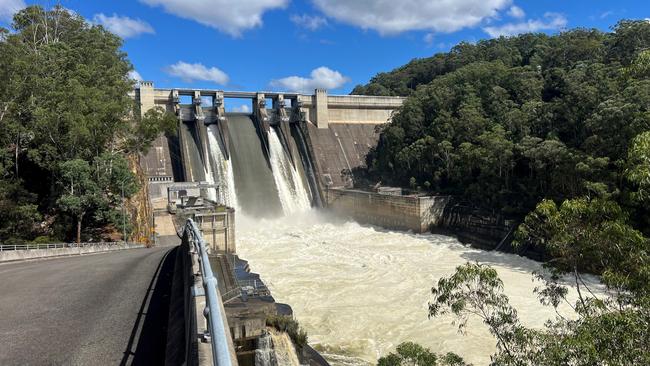
There was 78.7mm of rain that fell across the Warragamba catchment over the last week, according to WaterNSW.
Several other smaller dams across greater Sydney are already spilling including Woronora, Nepean, Cataract, Avon and Tallowa.
Warragamba spilled three times last year, in April, May and June.
Clean up begins
The NSW SES says the clean-up is beginning, while they are looking to resupply residents that have been cut off due to rising waters across other parts of the state.
NSW SES acting assistant commissioner Allison Flaxman said they estimate 10,000 properties have been impacted by the floods.
“As the river levels begin to subside, NSW SES members and our partner agencies are today commencing the task of assessing properties which have been flood affected,” she said.
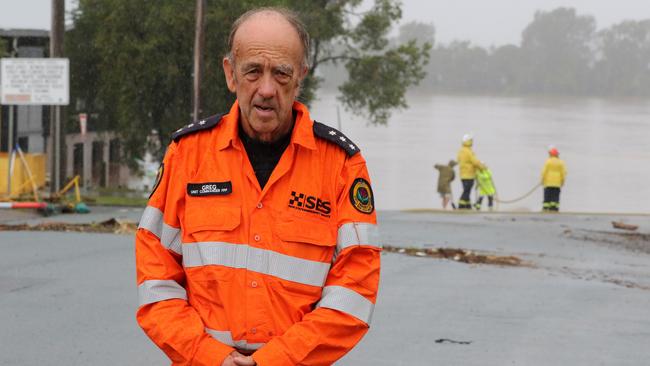
The SES is warning residents to let damage assessments take place before anyone tries to return home.
“It’s important we need to evaluate the extent of property and infrastructure damage to ensure your property is safe to return to,” Ms Flaxman said.
At the same time she said the SES will continue to carry out a resupply operations of essential foods and medications to stranded residents.
“The NSW SES has carried out 200 resupply requests in the last two days,” she said.
“There are still many communities that remain isolated, with 50,000 people estimated to be impacted.”
Full extent of damage revealed
Drone footage shows trees have been torn from their roots and debris is littered around swamped lands, with water levels sitting at alarming heights.
The towns of Coopernook, Cundletown, Ghinni Ghinni as well as Jones Island along the state Mid-North Coast look barren, knee-deep in water with little sign of life around.
The Mid-North and Hunter regions remain under emergency warnings.
At least 15 towns, mostly on the state’s Mid North Coast, remain isolated.
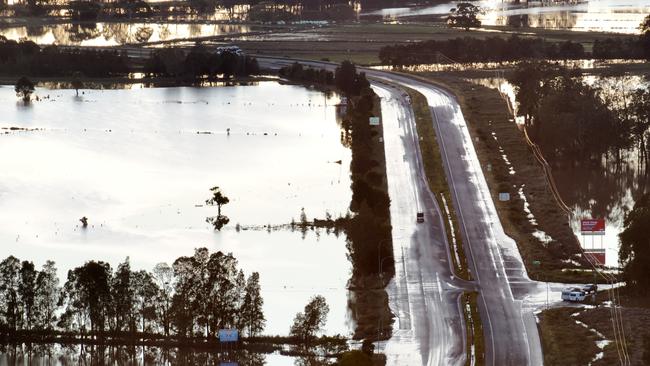
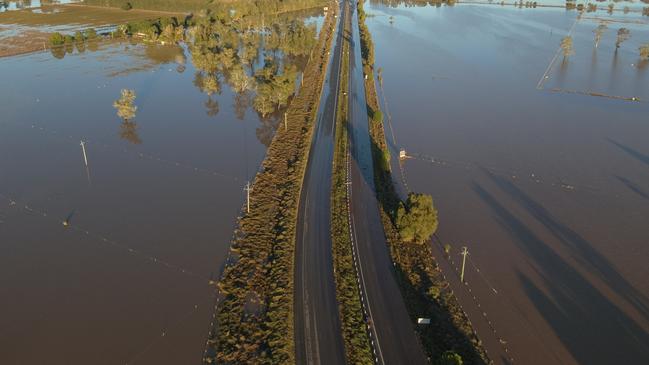
Dead cattle have washed up on beaches after being swept away in floodwaters.
Residents had to remove dead livestock and other debris from the sand after a week of torrential floods.
Oxley Island dairy farmer James Neal told SBS that hundreds of local dairy farmers had been impacted.
“It’s such a desperate situation, unprecedented in that any plan you had just went straight out the window,” he said.
“Cows just got washed away and basically got caught on fences.
“I’ve got heaps of photos of stock that has washed up and they’re not even local ones, they’ve come from up-river where obviously people thought they were on flood free paddocks and they just weren’t.”
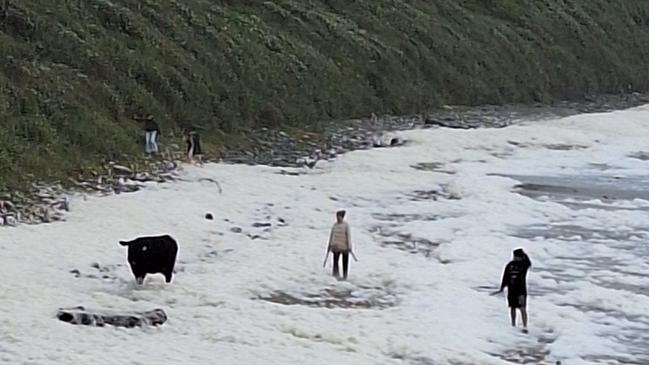

Social media is also awash of disturbing photos of animals trapped in the flood disaster.
Tens of thousands of NSW residents face a heartbreaking clean up after deadly floods left behind a wave of destruction.
Four people were killed as a catastrophic weather event left 50,000 people isolated in the Mid North Coast before the rain pummelled Sydney on Friday, triggering train delays and cancelled flights across the city.
An infant was transported by a rescue helicopter to the hospital with a medical condition after being stuck in floodwaters at Riverview near Port Macquarie on Friday.
Flooding is affecting large parts of the state east of the Great Dividing Range from the Northern Rivers to the South Coast.
The worst hit areas were located near river systems on the Mid North Coast and Hunter regions including Taree, Kempsey, Port Macquarie and Wauchope.
Sections of the Pacific Highway and Macquarie Pass were shut down due to roads being inundated with water.
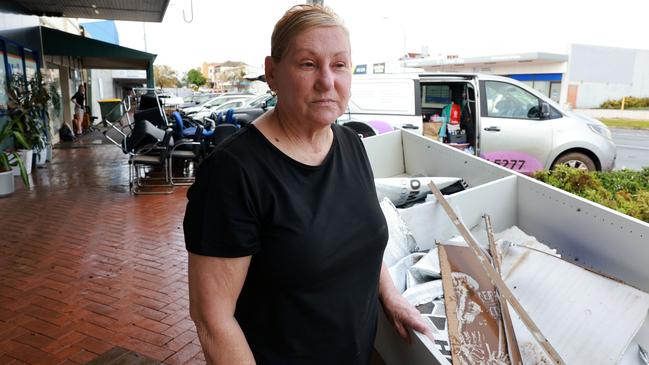
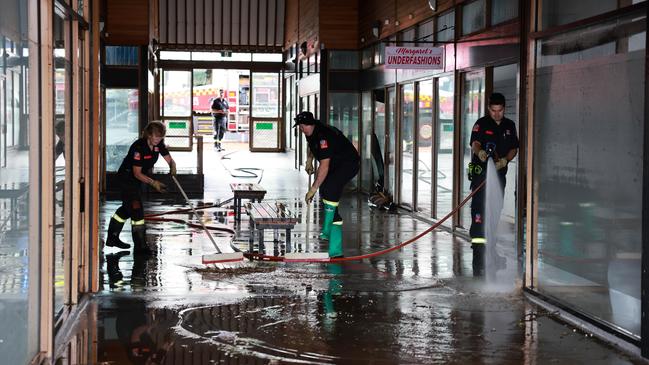
Comboyne in the Manning River catchment recorded 700mm of rainfall with other places receiving 500 to 6oomm of rain across the week.
Authorities warned as rainfall eased along the NSW coastline across the weekend the risk from flooding was far from over as water from heavier falls made its way downstream.
BOM’s Saturday Morning Update
Meteorologist Miriam Bradbury said there would still be widespread significant flooding before another weather system hit the state on Monday bringing strong winds and moderate rainfall.
“River peaks are flowing through lower parts of the catchment, and major flood warnings are in place for the Macleay River, the Hastings River, Wollombi Brook and Tuggerah Lake, with minor to moderate flood warnings for much of the entirety of NSW east coast,” she said.
Meteorologist Helen Reid also said flood warnings still extended across much of the NSW coast as the state moves into the clean-up and recovery phase after the week-long extreme weather on Saturday morning.
Overnight rainfall totals of 5 to 20mm were recorded between the mid-north coast, the Sydney metropolitan area, and across southern inland New South Wales.
However, heavier rains persist across the Illawarra, south coast and southern Tablelands, with totals coming up to 70mm.
Ms Reid warned that riverine flooding will likely continue for a number of days as flood peaks move downstream.
Conditions in NSW are expected to settle by Sunday, with only scattered showers in southern slopes and parts of the Riverina on Saturday morning.
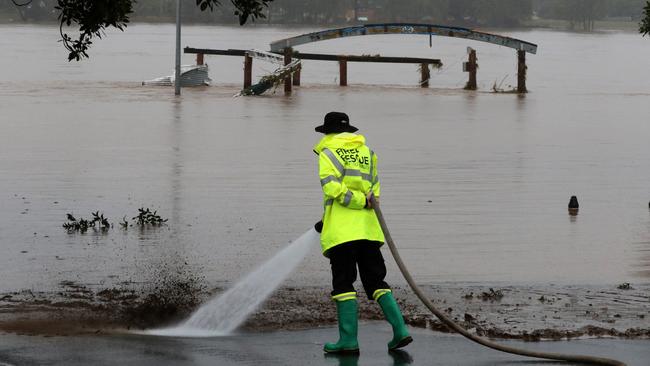
The Bureau also but said severe weather may threaten other parts of the country coming into Sunday.
“A very strong cold front will approach southeast Australia during Sunday … strong and gusty north-westerly winds will ramp up across South Australia and Victoria during the afternoon and evening, with a very windy night following for these areas, including Adelaide and Melbourne,” said Ms Reid
Severe weather warnings for raised dust and damaging winds will be issued into the weekend.
Widespread rain showers, small hail and isolated thunderstorms are on the cards for Melbourne and Adelaide on Monday.
High tides and large waves also forecasted for parts of South Australian, Victorian and Tasmanian coasts.
Very vigorous westerly winds will follow the front, followed cold southerly are expected to tear into the NSW coast next week, BOM said.
On Tuesday, snow levels of up to 1200 metres are likely to drop for the eastern alpine areas of the mainland, and down to around 700 metres for Tasmania.
The bureau also warns that the wet weather is also expected to extend into parts of the Northern Territory into Tuesday, with scattered showers reaching Central Australia and western inland parts of Queensland around Wednesday.
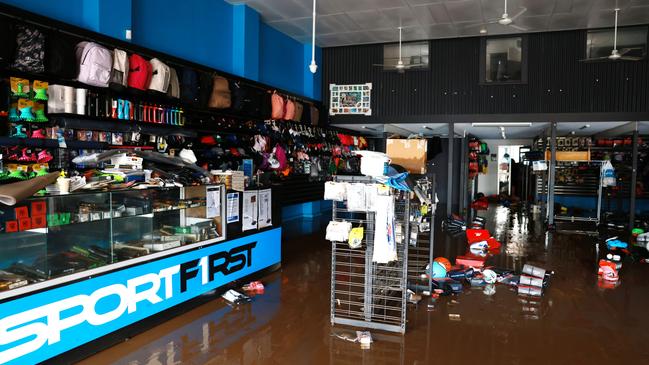
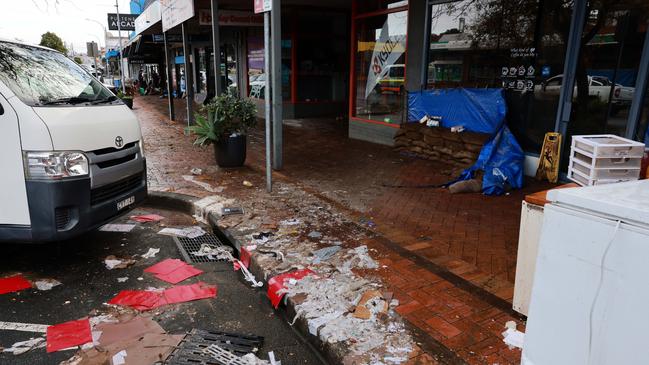
NSW Premier Chris Minns visits flood-hit Taree
NSW Premier Chris Minns has visited Taree, one of the hardest-hit communities, where he spoke with locals and businesses.
“We know it’s been incredibly tough and I want to say we’re doing everything we can to get this town back on its feet as soon as possible,” he said.
“We’ve seen some fantastic examples of neighbours saving neighbours, community members jumping for community members and it’s been impressive to see.
“We’ve had some fatalities in this natural disaster, we would’ve lost hundreds of people without the volunteers and the bravery of the men and women in the emergency services.”
Mr Minns said an order of government response was being roll out, beginning with rescuing people in life-threatening danger, providing food and shelter to those in need and finally, co-ordinating clean-up initiatives.


But he said a plan to financially aid the community would not be announced until he understood the impact of the damage.
“I don’t want to announce a plan we haven’t articulated yet,” he said.
“The job today is to understand what the impact of the storms has been and then to work out a game plan to get the community back up on their feet.”
Power lines down, restoration in the works
In NSW, the extreme weather and flooding brought down power lines and caused several power outages along the Mid North Coast, particularly in areas of Taree, Port Macquarie and Kempsey.
Midcoast Council mayor Claire Pontin said the extent of water damage from floodwaters has been “horrendous”.
“I would have to say that people in Taree and Whingham are – I think they are all in shock,” she told the ABC.
“I speak to people and there is just a bewilderment that it could have been this bad.
“The water in Taree and Whingham has been going down … people are able to get back into their homes and their businesses, and they are just facing devastation and it is going to be tough.”
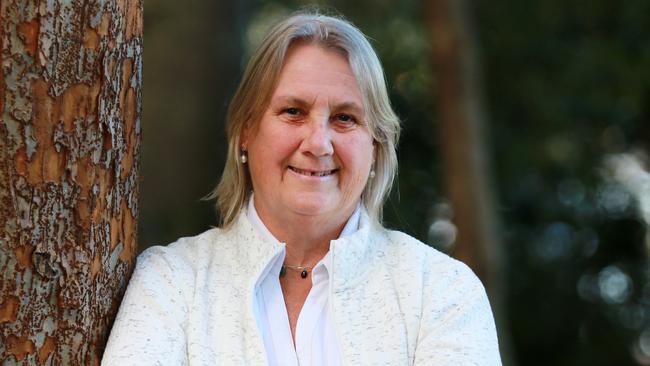
With power lines down in the in parts of the Mid-coast, Ms Pontin said communication has been “difficult” for people cut off from each other.
“There were and still are a lot of homes that are without power and a lot of people who haven’t been able to use the internet,” she said.
“It is spasmodic. The mid-coast council covers a very large area but it has been affecting people in the flooded areas in Taree and Whingham.”
Ms Pontin has reassured that power is “coming back online” in the Mid-coast and repairs to systems are in progress.
Essential Energy crews have restored power to over 690 homes and businesses, but 3200 residents still remain without electricity and internet.
Floodwater levels remain inconsistent with some areas facing recession while others still actively flooding.
Erosion, softened ground, fallen trees, branches and active flood zones have restricted teams in being able to conduct repairs
The crews have warned residents to exercise caution when entering properties affected by floodwaters by ensuring the power has been shut off or disconnected.
This includes those with solar panels, which can generate electrical current regardless of whether the electricity has been shut off or not.
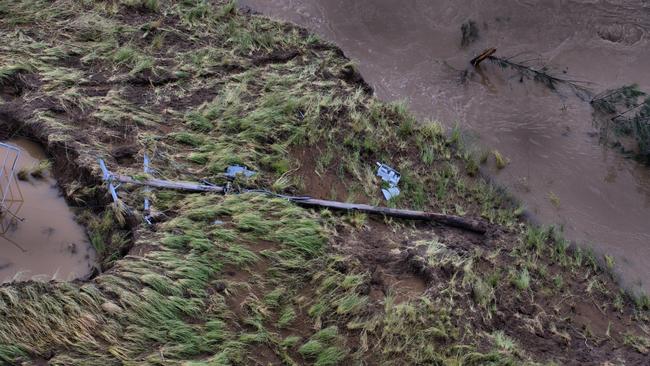

Traffic warnings and road closures
Several roads have been affected by the onslaught of floodwaters, including the Pacific Highway, which remains closed between Coopernook and Purfleet.
The highway is also closed at Charmhaven on The Central Coast.
Transport NSW has warned motorists to avoid non-essential travel in flood-affected areas, and are reminded never to drive through floodwaters.
Driver and motorists have been urged to take note of road closures also remain in place in the Hunter and Mid North Coast, as Saturday morning.
Giinagay Way in Macksville and also between North Macksville and Nambucca Heads has been closed.
Similarly, traffic activity along Failford Road between The Lakes Way and the Pacific Highway at Failford has been stopped.
Seaham Road at Raymond Terrace, Melbourne Street at East Maitland between Day Street and Cumberland Street, and Main Road Gillieston Heights are also closed due to floods.
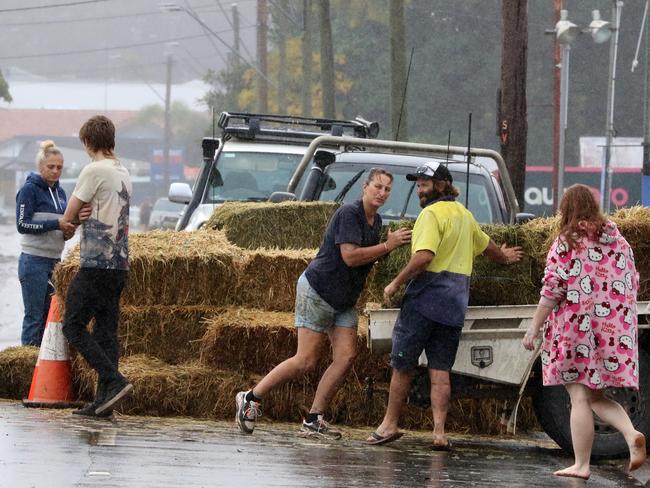
Over in Greater Sydney, Sackville Ferry and Lower Portland Ferry remain closed due to the flooding.
Audley Weir in Royal National Park as well as Menangle Road at the Nepean River Bridge in Menangle have also been closed.
Other closures include Riverside Drive between Delhi Road and Lane Cove Road, Wisemans Ferry Road at Cattai and Pitt Town Road at McGraths Hill.
Public transport links have been affected with a limited bus replacing trains between Newcastle Interchange and Fassifern on The Central Coast and Newcastle Line due to the flooding at Cockle Creek.
Trains are also not running on the Hunter Line and limited replacement buses running cannot access all stations.
Whereas in Campbelltown and Moss Vale, trains have resumed on the Southern Highlands Line after earlier flooding at Mittagong.
Flood alerts still in action
Alerts have been issued by the SES on flood condition.
NSW SES Chief Superintendent Paul McQueen said crews would be working to wash out flood-affected properties and perform damage assessments in areas where floodwaters are beginning to subside.
“We’re seeing conditions improve and we will have an increased number of volunteers out in force today to start the damage-assessment process, which is likely to take some time to complete,” he said.
“This is important work to allow us to assess any access and safety issues before de-escalating evacuation orders.
“I reiterate this is still a dangerous situation where significant impacts to infrastructure and properties are likely to have occurred.”
However, Mr McQueen said it was still not possible to let people return to their homes until floodwaters subsided and homes and communities could be accessed safely.
Several minor to moderate flood alerts have been issued around areas surrounding the rivers of Deua, Georges, Bega, Hawkesbury, Colo, Hunter, Nepean, Upper Nepean and Shoalhaven.
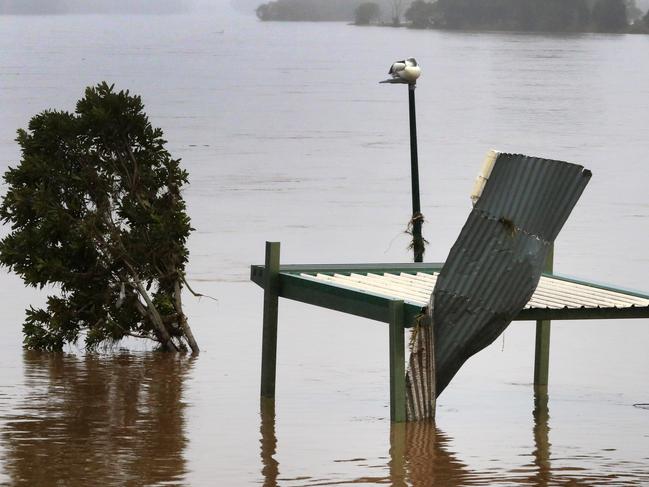
Residents living in and around Bega, Wamban, Liverpool, Milperra, Windsor, Upper Colo and Putty Road, North Richmond, Wallacia, Camden, Nowra, Terara, low-lying properties on Cut Hill Road, Menangle Bridge and low-lying properties on Cobbitty Road have been urged to monitor conditions and check warnings issued by SES.
Most of the rivers are expected to remain below minor flood level.
A red alert still remains in Gillieston Heights and people have been advised to prepare for isolation with flooding in progress.
The SES has warned people to avoid areas around Pitnacree, Raworth, as well as properties on parts of Windeyer Street, Crolls Mill Lane, Hooke Street, Abelard Street, Lord Street and Brown Street and Allison Court Retirement Village, Brown Street, with moderate flooding predicted.
Rising insurance claim amid flood severity
The Insurance Council of Australia has received more than 1600 insurance claims in relation to the deadly floods.
The ICA CEO Andrew Hall said the corporation was expecting more claims to come through over the weekend once residents returned back to their homes or when water damage became obvious.
“We strongly encourage anyone in the impacted areas to listen to emergency services, take shelter where it is safe to do so and to not put themselves or others at risk,” he said.
“Once safe, please contact your insurer as soon as practicable to let them know you have any loss or damage.”
For those ready to commence clean-up, the ICA recommends prioritising safety, documenting damage and speaking to an insurer.


